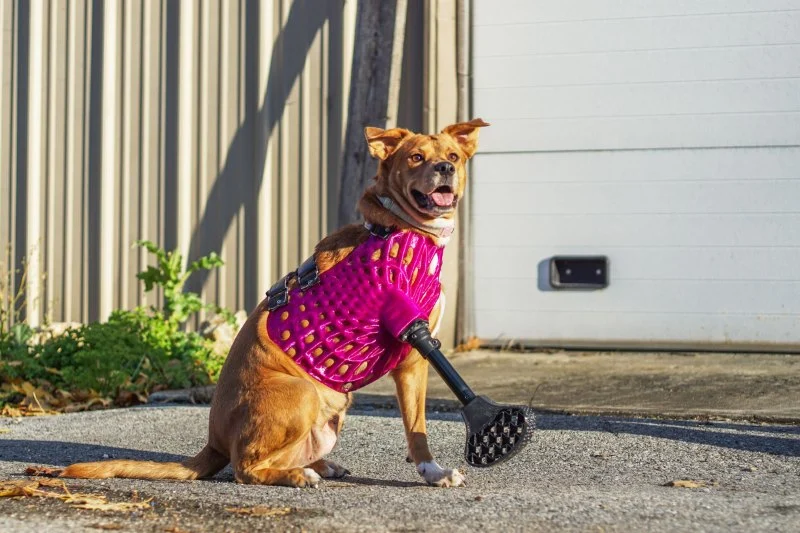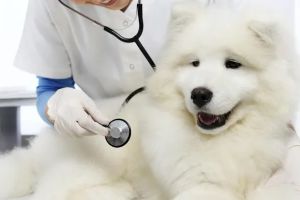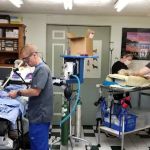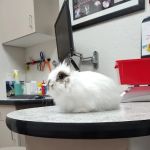
- How-3D-Printing-Is-Being-Used-in-Pet-Prosthetics-Surgery
- Understanding-3D-Printing-in-Pet-Care
- How-3D-Printing-Works-for-Pet-Prosthetics
- Benefits-of-3D-Printed-Pet-Prosthetics
- Real-Life-Success-Stories
- How-Pet-&-Puppy-Can-Help
1. How 3D Printing Is Being Used in Pet Prosthetics & Surgery
Technology continues to transform the way we approach healthcare, and in the world of veterinary medicine, 3D printing is making a significant impact. Particularly in pet prosthetics and surgery, 3D printing has opened up new possibilities for improving the lives of pets with disabilities or injuries. From custom prosthetics to surgical tools, the ability to create precise, tailored solutions has revolutionized the way vets treat animals.
In this article, we’ll explore how 3D printing is changing the landscape of pet care, the benefits of 3D-printed prosthetics for pets, and real-life examples of how this technology has helped animals regain mobility and quality of life.

Veterinary Acupuncture and Alternative Medicine in Phoenix
20616 N Cave Creek Rd #112A, Phoenix, AZ 85024, USA
2. Understanding 3D Printing in Pet Care
3D printing, also known as additive manufacturing, involves creating objects layer by layer from a digital file. In the context of veterinary care, it allows veterinarians to design and produce custom prosthetics and medical devices for pets that would otherwise be difficult or impossible to create using traditional methods.
The process starts with scanning a pet’s injured or missing limb to create a 3D model. Once the model is prepared, it can be printed using a variety of materials such as plastic, silicone, or metal, depending on the needs of the prosthetic. This level of customization ensures that each prosthetic is a perfect fit, offering comfort and functionality tailored to the pet's unique anatomy.

Magnolia Animal Clinic
ShelbyvilleShelby CountyKentucky
2398 Shelbyville Rd, Shelbyville, KY 40065, USA
3. How 3D Printing Works for Pet Prosthetics
The process of creating a 3D-printed prosthetic for a pet typically involves several key steps:
1. Scanning and Modeling
To begin, a high-resolution 3D scan of the affected area is taken. This scan captures the exact shape and dimensions of the pet’s limb, allowing for a precise, customized prosthetic. In some cases, vets may combine scans with X-rays or MRIs to get a more detailed view of the bone structure.
2. Design and Customization
Using specialized software, the scanned data is used to create a digital model of the prosthetic. The design can be customized to meet the specific needs of the pet, ensuring that the prosthetic will fit comfortably and function as intended. For example, a prosthetic limb might be designed with extra padding or a specific weight distribution to accommodate the pet’s movements.
3. Printing the Prosthetic
Once the model is finalized, the prosthetic is printed layer by layer. Depending on the material chosen, this process can take anywhere from a few hours to several days. The end result is a lightweight, durable, and functional prosthetic that can help the pet regain mobility.
4. Fitting and Adjustments
After printing, the prosthetic is fitted to the pet’s limb. In most cases, this is a straightforward process, but minor adjustments may be necessary to ensure a perfect fit. Once the prosthetic is in place, the pet will undergo a period of rehabilitation to help them adjust to the new limb and learn how to use it effectively.
4. Benefits of 3D-Printed Pet Prosthetics
3D printing offers several advantages over traditional prosthetic manufacturing methods, making it a game-changer for pets in need of prosthetics or medical devices. Here are some of the key benefits:
1. Customization
Unlike traditional prosthetics, which are often mass-produced and may not fit perfectly, 3D-printed prosthetics are tailored to the exact specifications of the pet’s body. This ensures a better fit, greater comfort, and improved function.
2. Faster Turnaround
Because 3D printing is an automated process, prosthetics can be created more quickly than using traditional methods. What used to take weeks or months can now be completed in a matter of days, which is especially important when it comes to pets recovering from surgery or injury.
3. Cost-Effectiveness
3D printing is often more affordable than traditional prosthetic methods. The materials used in 3D printing are typically less expensive, and the process doesn’t require as much labor or complex machinery. This makes custom prosthetics more accessible to a wider range of pet owners.
4. Durability and Comfort
3D-printed prosthetics are designed to be lightweight yet durable. The materials used are often more comfortable for pets, reducing the risk of irritation or sores. Furthermore, the prosthetics are designed with the pet’s lifestyle in mind, ensuring that they can move, play, and perform regular activities with ease.
5. Real-Life Success Stories
There have been many heartwarming success stories of pets benefitting from 3D-printed prosthetics. One notable case is that of Derby, a dog born with deformed front legs. Using 3D printing technology, a team of veterinarians created custom prosthetic limbs for Derby, allowing him to walk and run for the first time in his life. His story has touched the hearts of millions and showcases the potential of 3D printing in animal care.
Another inspiring example is Faith, a kitten who lost her hind legs in a car accident. Through 3D printing, her veterinarians created a specialized wheelchair that allowed her to regain mobility and lead a normal, active life. These success stories highlight the transformative power of 3D printing in giving pets a second chance at happiness and mobility.
6. How Pet & Puppy Can Help
If you're interested in exploring 3D-printed prosthetics or learning more about innovative pet care solutions, Pet & Puppy is a valuable resource. Our platform connects pet owners with trusted veterinarians, prosthetics specialists, and advanced pet care services to help improve the quality of life for your furry friends. Whether you're seeking advice on 3D-printed prosthetics or need guidance on rehabilitation after surgery, Pet & Puppy is here to support you every step of the way.







 Animal Care Hospital: Temple Tara-Lynn DVM3.0 (8 reviews)
Animal Care Hospital: Temple Tara-Lynn DVM3.0 (8 reviews) Revel Vet4.0 (192 reviews)
Revel Vet4.0 (192 reviews) Four Legged Friends Animal Hospital4.0 (494 reviews)
Four Legged Friends Animal Hospital4.0 (494 reviews) PetVet Vaccination Clinic0.0 (0 reviews)
PetVet Vaccination Clinic0.0 (0 reviews) Corydon Animal Hospital4.0 (153 reviews)
Corydon Animal Hospital4.0 (153 reviews) Avian & Exotic Animal Clinic4.0 (683 reviews)
Avian & Exotic Animal Clinic4.0 (683 reviews) The Mental Health of Pets: Signs They Need Emotional Support
The Mental Health of Pets: Signs They Need Emotional Support How to Read the “Guaranteed Analysis” on Pet Food Labels
How to Read the “Guaranteed Analysis” on Pet Food Labels How to Detect & Manage Pet Ear Tumors: A Comprehensive Guide
How to Detect & Manage Pet Ear Tumors: A Comprehensive Guide Transitioning Training Methods as Pet Ages: Adapting Techniques for Senior Pets
Transitioning Training Methods as Pet Ages: Adapting Techniques for Senior Pets How to Choose the Right Pet Supplement Brand: Essential Tips for Pet Owners
How to Choose the Right Pet Supplement Brand: Essential Tips for Pet Owners How to Transition a Senior Pet to Easier-to-Eat Food: A Comprehensive Guide
How to Transition a Senior Pet to Easier-to-Eat Food: A Comprehensive Guide